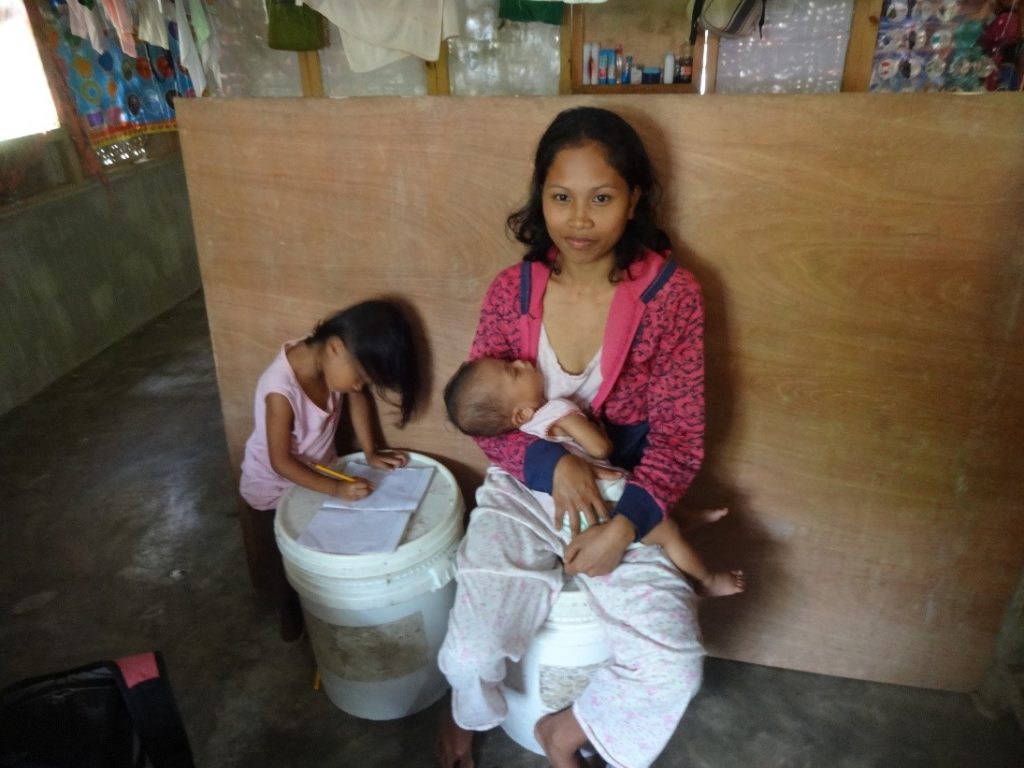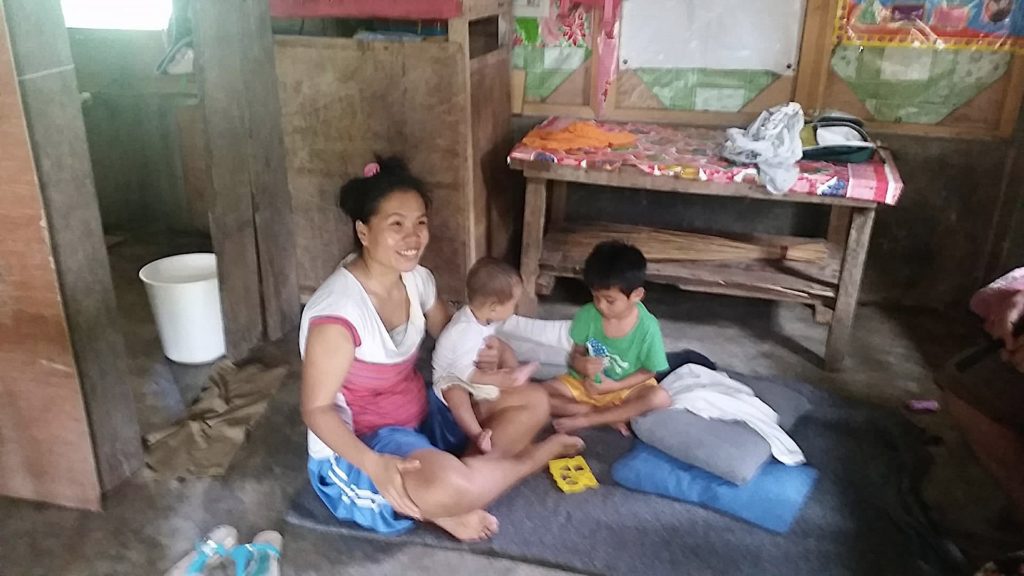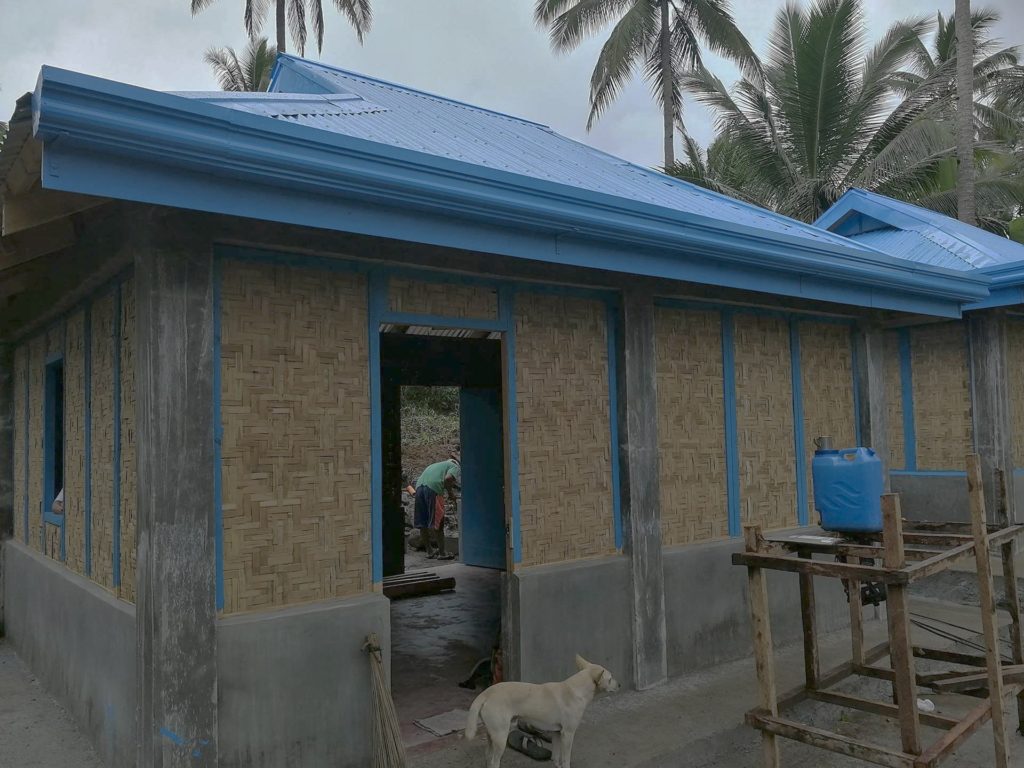After STS Yolanda (international name Haiyan) struck, #CDRC implemented two #shelter projects which gave 600 families new homes. In the following writing, some of the beneficiaries shared about their livelihoods before and after Yolanda, as well as their experiences during the super typhoon.
Written by Ditte Baltersen
Jessica
Jessica, the first beneficiary I met, lives together with her husband and two children. Her oldest child was 6 months old when Yolanda struck. Before the typhoon, the family lived in a shanty with a roof made of coconut leaves. This house was clearly not built to resist a typhoon as strong as Yolanda.
The strong winds and heavy rains brought by the super typhoon ruined their house and they were left without a home. Besides losing their home, the family also lost their source of income. Jessica’s husband used to earn money by collecting coconuts but after Yolanda struck, lots of trees were fallen. This did not only make it extremely difficult to get to work but also left many people unemployed.

Today, Jessica and her family live in one of the houses built by CDRC. Jessica said this house makes them feel more secure due to the construction of the building. Also, Jessica has attended trainings that have made her more prepared not only for typhoons but also other hazards such as earthquakes and landslides. Furthermore, she has become a member of the local disaster preparedness committee (DPC).
Although Jessica overall feels more secure and prepared for future disasters, landslides and earthquakes are still a major concern for her. However, she now knows what to bring if a warning is given by the community, and this is a big step in being prepared for a potential disaster.
Joverly
The second beneficiary I met was Joverly. She lives in the same barangay as Jessica, together with her three children and her husband. Her husband is rarely at home since he works far away and can only afford to come home every second weekend. Therefore, it is important for her to know what to do when a disaster strikes so she will be able to protect her children by herself. Before Yolanda happened, Joverly heard the warning on the radio saying that a strong typhoon was coming. The problem was that she didn’t realize exactly how strong the typhoon would be. Her experience left her shaken and whenever there were heavy rains and wind, she felt anxious.
Like Jessica, Joverly also used to live in a house made of light materials. She therefore feels much more secure in her newly-received house, which is partly made of concrete. Also, she has attended trainings in livelihood and disaster risk reduction, which has helped her feeling more in control when something occurs as well as better prepared. She told me that she was able to use her training in practice when an earthquake struck.

Joverly said that she has now fully recovered from her traumatic experience. The recovery was successful, thanks to her DRR training combined with sessions for trauma.
Antonio
Antonio is a 49-year old physically challenged man. He is born with a disability that makes it difficult for him to move freely, especially because he has never had the opportunity to get a wheelchair. Before Yolanda, Antonio lived far away from his family.
Like Joverly, he heard warnings through the radio but didn’t prepare anything, partly because he didn’t know how and what to prepare and partly because he wasn’t able to prepare much due to his disability. The strong winds brought about by the typhoon destroyed his house. Fortunately, he was able to seek shelter underneath a concrete kitchen table.
Being chosen as one of the beneficiaries has improved Antonio’s quality of life due to different factors. First of all, he has gotten a more resistant house. Secondly, he now lives closer to his family. This gives him the opportunity to get help when his disability limits him in performing some necessary tasks. In addition, he noted that there has been a strong sense of solidarity between the beneficiaries whose houses have been built next to each other.
Overall, Antonio has been very grateful to CDRC for his new home. In the future, he wishes to learn about DRR by attending trainings.

Ditte Baltersen is taking a Bachelor’s Degree in Emergency and Risk Management at the Metropolitan University College in Copenhagen N, Denmark. She did an internship at the Citizens’ Disaster Response Center (CDRC) from November 2017 to January 2018.

Leave a Reply